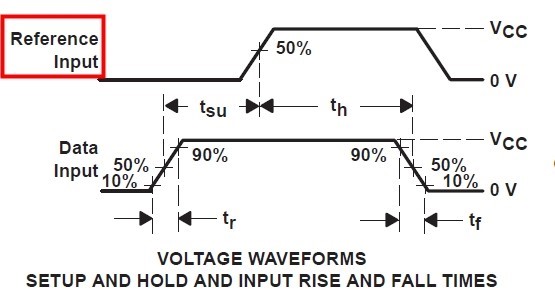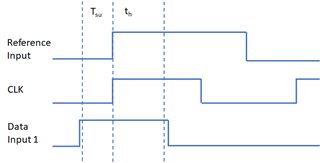Hi Team,
I would like to know what the mean of the tsu.
I read the data sheet, it says "set up time before CLK", but in the picture, I didn't understand the meaning of the picture.
- What does reference input refer to?
- Why does tsu start with the rise of data input and end with the rise of Reference?
- What does tsu show?


Thanks for your help in advance!
BR
Jenson


